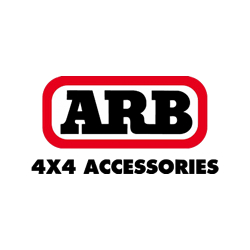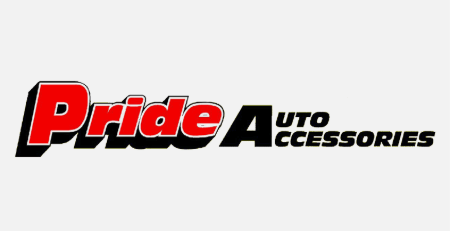Tonka Truck (Nissan GU Patrol) gets a GVM increase
Note: Originally published in ST October 2011. Also printed in ST April 2013.
GVM or Gross Vehicle Mass is the total weight of your vehicle including fuel, passenger and luggage load.
Tare mass is your vehicle without load or fuel (empty).
Unladen mass is the vehicle’s Tare mass plus fuel.
Over Tonka’s six years of being our family tourer, trailer tow vehicle and daily driver a bit has been added in the way of accessories. Actually, a lot has been added to improve our four wheel driving and touring. Many of these ‘bolt on’ additions also added significant weight. These include: long range fuel tanks, water tank, bull bar, side rails, electric winch, roof rack, roof top tent and a spare wheel/jerry can carrier. Then there is the drawer system and fridge, food, stove, radios, snow chains, tools, Bead Breaker tyre repair kit, table, chairs and so the list goes on. No wonder poor Tonka was getting overweight.
What does overweight mean for a truck? Well, it is exceeding its GVM which is the total allowable mass for legal operation of the vehicle on the road. If you want to check your vehicle’s specified GVM you will find it listed in your Vehicle Owner’s Handbook and it is also stamped on your vehicle’s Compliance Plate that will be attached to your fire wall under the bonnet. Next, you can visit any of the ACT Government’s rubbish tips and weigh your vehicle on the weighbridge. There is no charge for weighing your vehicle unless you ask for a weighbridge certificate. In that case it will cost $21 for the certificate.
Better still, before your next big trip or even weekend away load your vehicle for the trip including full fuel and water tanks. Then weigh it on the weighbridge. Now check it with your vehicle’s specified GVM – I hope you are not over!
So what, you say if your vehicle may be a tad over its GVM? Well, if your vehicle is involved in a traffic mishap then it may be deemed unroadworthy. In the extreme circumstance your insurance company may refuse any payout. I have not heard of this happening – yet. But, I have been told insurance companies have referred vehicles involved in an accident for engineering checks before they pay the claim. There is also the potential for the roads authorities (in any state) to target modified 4wd trucks for compliance with regulations.
A trip to the tip did have me wondering about Tonka’s GVM. I noticed figures on the weighbridge well over 3,000 kgs. Perhaps this was a bit of an indication that I may have a GVM problem. You would think that the fact most of the accessories are made of steel would be a clue (doh!).
These changes to our truck were made over a period of almost five years. Because the changes were incremental it took a while for me to start actually thinking about the weight impacts of the changes. For example, the extra fuel capacity and water tank added a lazy 100kgs weight to our truck – this does not include the weight of the long range sub tank or spare wheel and jerry can holder though! 100kg is just the weight of the additional fluids.
These were necessities that had to be included for long distance travel and camping. Then there is the additional water or fuel that may go on the roof rack for a remote desert trip. Canning Stock Route comes to mind when you would need to carry more of these essentials. However, this extra weight is reduced fairly quickly as you would certainly be getting the fuel off the roof by topping up your tanks often. This gets the weight back down low where it should be carried too. I don’t think you will find any authorities on the Canning checking your GVM but you have to be careful just the same as an overloaded vehicle can break vital things when you need them most. Shocks can fail and springs or even roof rack mounts break!
I asked many people including accessory suppliers about GVM and no one really could tell me much about it. No one seemed to know if anyone had increased GVM on a truck and there were others whose advice was “better not to ask the question”!
In short, I found it hard to get any meaningful information on what was necessary to upgrade or increase GVM. There was information on 4wd forums but none of which really related to the ACT experience. So, on looking at Vehicle Standards Bulletin (VSB) No. 14 and the information available from ACT TAMs on Light Vehicle Modification in the ACT, I thought it time to get an engineer to help our GVM problem.
The information from TAMs also included a list of engineers who ‘…are acceptable to Road User Services (RUS).’ One engineer was in Sydney, another VIC, yet another QLD and of the last three, their locations were Deakin, Mitchell and Queanbeyan. I initially took Tonka to Ray Spence at Mitchell (Canberra Motor Works) as he was the closest to me. However, I did have a discussion with Mario Larocca (Marloc Engineering Queanbeyan) too.
I have also talked with one of the manufacturer’s of most of my gear – ARB. If our vehicle was new before initial registration then ARB can supply their DOTAR approval for a GVM upgrade with their suspension upgrade kit. They would supply the amended compliance plate without the need for a separate engineer’s certificate. If the vehicle is already registered then you will need an engineer’s certificate to increase GVM. In this case, engineers can contact them to get information on the ARB/ Old Man Emu springs and shocks in use and information on the DOTAR approval. But, you still need to engage an engineer to certify the modifications to your vehicle for the roads authorities.
Unfortunately, most of us are totally unaware of this situation when buying a new vehicle. But if you are contemplating a new 4wd that you are likely to modify with a new suspension then do your homework and seek increased GVM before it is first registered. You will save money this way.
On initial inspection, Ray discovered that Tonka was in fine condition including all accessories, the lift was within specification but Tonka exceeded its GVM (insert expletive here!).
As it came out of Mr Nissan’s factory in Japan, Tonka had the following statistics:
GVM 3080 kg
Tare Mass 2485 kg
Unladen Mass 2612 kg
(Difference between Tare and Unladen is the allowance for fuel of 127 kgs which was the standard fuel tanks – main and sub that came fitted).
So, the difference between GVM and Unladen Mass is (3080-2612) = 468 kgs. This represents total loading capacity of passengers and luggage up to our allowable GVM.
Tonka also came out of Mr Nissan’s factory as a seven seat vehicle. According to Australian Standard criteria allowance is made of 68 kgs per seating position for a passenger and 13 kg per passenger seating position for luggage. So (68+13) x 7 = 567kgs.
So, technically, from the day that Tonka immigrated to Australia from Japan it was overweight by some 99 kgs!
Really, even without the factory fitted bull bar or tow bar when I picked up Tonka, if I had filled seven seats with people and put in luggage I would have been likely to go over GVM. Not to mention that our first trip across Australia as a family included six of us and a trailer with a roof rack jam packed!
We modified our truck’s suspension when it was still ‘new’ as we were advised that the standard springs and shocks would fail on a prolonged trip around Australia. “Under warranty” I said but then my advisors mentioned good luck finding a dealer to fix suspension under warranty in remote parts of WA! This modification also gave the truck a bit of lift which we know is very helpful when driving off road. Many of the other accessories we have are either for vehicle protection off road or to better cater for our touring and camping lifestyle.
In my discussions with Ray Spence before actually going ahead to increase GVM, we talked about alternatives. For example, are there other four wheel drive vehicles that do not have this problem? We discussed many popular brands and options including tray-back four wheel drives even Toyotas and Land Rovers (Ray does seem to specialise in the latter). He advised me that many of these also have GVM problems. Particularly once we 4wdrivers start adding the popular accessories to lift, protect and carry more camping gear.
For example, Landcruiser 100 series have a marginally larger GVM (approx 3200kg) than our Nissan but this soon evaporates when adding all of the accessories mentioned. I am told the 200 series owners are in a worse position with little room to add anything without exceeding its GVM.
This was also a surprise outcome to me as I would have considered changing vehicles if that was an option. Still, the engineering cost is likely the cheaper option than changing vehicles with all the associated costs that entails. Not to mention building up another truck for our needs!
So the ‘GVM’ increase project was on and it took several visits to Ray’s where he conducted testing on the vehicle and sought specifications on different parts. For example, the axle housings/assemblies have to be load tested to ensure they will cater with extra weight. All items related to load bearing need to have specifications identified and tested where necessary. Tonka’s rear wheel bearings are rated to almost 8 ton! So the vehicle originally has some significant over-engineering for the load it has been specified to carry.
One important point is that the more information you can personally source and provide to an engineer on the accessories (specifications including manufacturer’s stated load bearing capacities, etc) the cheaper it will be for you in the long run.
Braking performance, sway testing, chassis torsion and beaming test, load distribution between front and rear axles and various combinations of both were tested. There is a lot of work involved and fortunately, some information was already available from previous tests and could be used in the engineering report.
There lays another rub. Engineers build up intellectual property from their work that for professional and commercial reasons this knowledge is not shared universally. Additionally, not all makes and models of vehicles either come out of the same factory or have been built with identical components. This complicates the situation further as one vehicle’s testing may not satisfactorily apply to another vehicle of the same make and model.
I started this with three things in mind:
• Increase GVM (a must if we were to keep the vehicle as it is).
• Be confident that modifications made were safe for my family tourer.
• Ensure that Tonka is compliant and street legal (mainly for insurance purposes but also I did not want my vehicle to be defected at any time by the authorities)
With Ray’s help I believe we have achieved all three. I was reasonably confident that the modifications were safe and appropriate as we were not constantly breaking suspension parts or CV joints etc.
In satisfying each of these three objectives there were no further modifications necessary to achieve any of them. As it stood, Tonka was able to meet all three once the paperwork (certification) was completed. So, largely this was a paper exercise but necessary just the same. Although engineer testing was still necessary to determine nothing more was needed!
It was not a cheap exercise but I try and rationalise the cost with comparable examples of accessories we have bought to better enjoy what we do. This was I believe a necessary evil. Again, changing vehicles would likely cost more and I may still need to go through an engineering exercise if I do similar modifications or buy any accessories.
Costs were:
Engineering $ 2888.16 (10 hours @ $250ph and includes weighbridge costs $97, photos $18.20 and of course GST)
Inspection Fee (RUS) $55.70
Additional Registration Fee (RUS) $124.10 (Due to increased Tare)
Anxiety, worry and frustration with officialdom (priceless)
Total $3067.96
Final results:
GVM 3600 kg
Tare Mass 2913 kg
Unladen Mass 3100 kg
Tonka also now has increased wheel track front and rear and a change to steel wheel rims of 16” diameter (replacing 17” alloys). The tyre size increases rolling diameter by 14mm included in the report and the Speedo calibration was also confirmed at +/- 3%. Our seating configuration has been changed from seven to five which suits me as the drawers are unlikely to ever come out.
In effect, we have another half ton of GVM but that’s it. While I did not need to change anything at the time to achieve this additional GVM allowance, the reality is that from standard we have replaced suspension springs, shock absorbers, sway bar and the wheel/tyre combination. These changes meant that we were effectively going through a paper exercise (albeit with engineering testing) to confirm the suitability of our modifications.
We will need to continue to be wary of what we load on trips. Everything carried must have two or more uses to qualify for a place! It might be time to replace my steel winch cable with rope which is much lighter. Geez, I could stand to lose a few kilos too to help poor old Tonka’s GVM.
No comments needed here please!
A few tips if you are thinking of a GVM upgrade:
- A GVM upgrade on vehicle is easier and cheaper if it is done prior to initial registration, that is, a new vehicle before it is registered.
- Talk to several engineers and discuss what is needed and estimates of likely costs. If an engineer has already done this work on a vehicle similar to yours previously then there will possibly be less testing to perform.
- Talk with manufacturers of accessories and suspension components. They may have technical information or pre-approvals from roads authorities for their goods. This may help your engineer and reduce costs to you.
- Gather as much information as you can on your vehicle and its accessories. You doing this means you are not paying for an engineer’s time to do it.
- An alternative may be to tow a camper trailer. This can help enormously to spread load over another axle. But, it also introduces more to consider including the tow ball load and suitability for planned destinations etc. But as mentioned, if like mine your vehicle may be technically over GVM if you put any accessory on it so towing a trailer may not help!
- Some manufacturers of suspension systems have package deals including engineering certification with the purchase of the complete suspension upgrade. The types of packages I have seen advertised were relevant to NSW/VIC road authorities. I am not aware how effective these would be with ACT registration rules.










